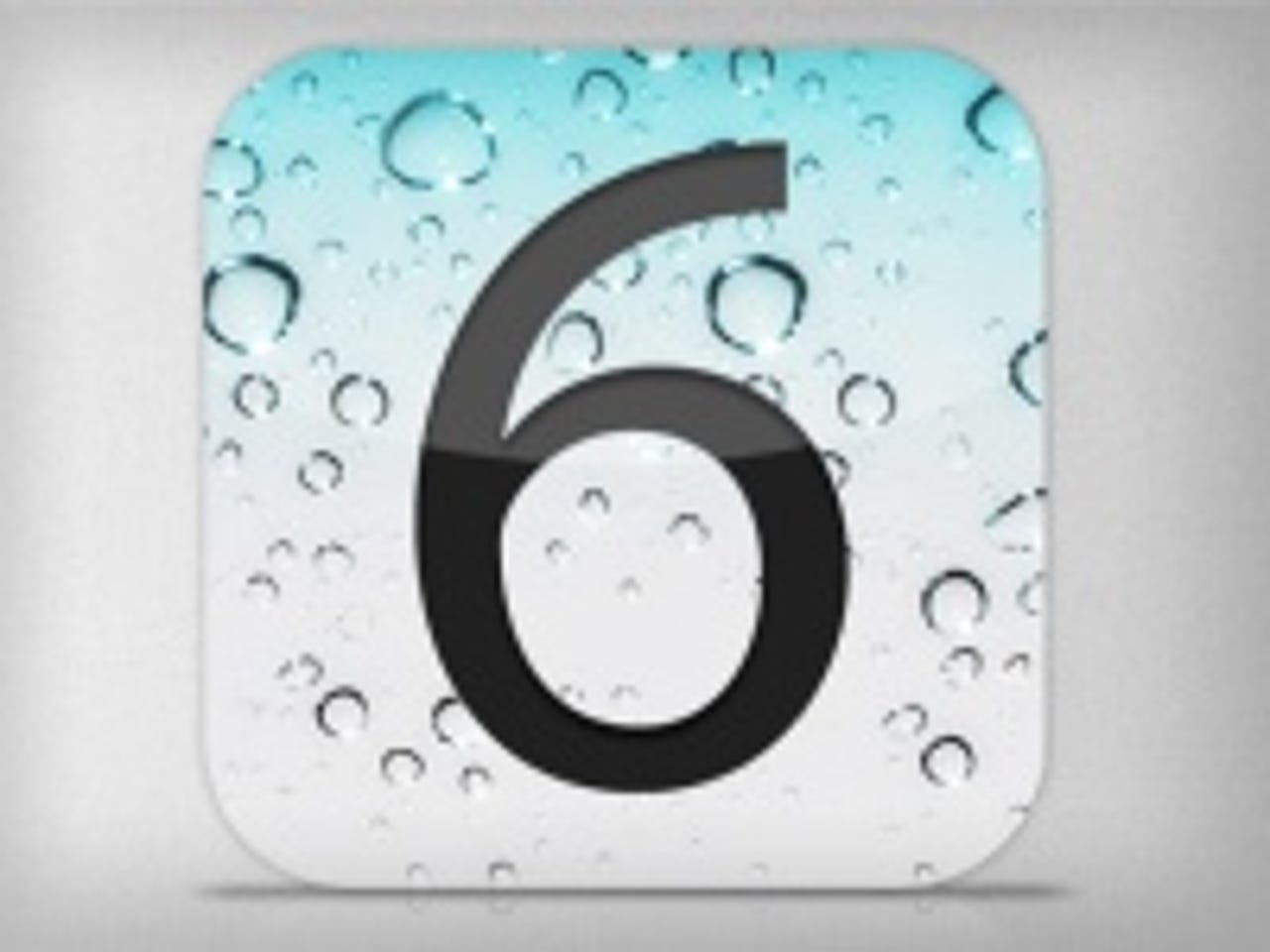iOS 6 features: How do Windows Phone and Android ICS compare?


iOS 6 logo
On Monday, Apple gave a preview of its next mobile operating system, iOS 6, which brings deeper Facebook and Siri integration and functionality. It also replaced the Google Maps app, which has been a part of the platform since 2007, with its own in-house Maps program.
Following the release of the developer iOS 6 beta, I decided it might be useful for potential phone buyers if I compared the five most notable features of iOS with the platform's key competitors, Android Ice Cream Sandwich and Windows Phone Mango.
Choosing a smartphone? Consider the OS.
Voice actions on Andriod
Voice recognition and control
In the iOS 6 update, Apple gave voice recognition tool Siri new powers to launch native and third-party apps, using spoken commands only.
Thankfully, Android owners can also get in on the voice-control action courtesy of Google Voice Actions (pictured). Galaxy S III owners get even more spoken control functionality through Samsung's S Voice system, which lets people open native and third-party apps, schedule appointments, check out the weather or perform web searches without touching the handset.
Windows Phone also lets people open native and third-party apps via speech, but it lacks the added functionality for more advanced tasks, such as scheduling meetings.
It's interesting to see that the major mobile OS vendors are putting a lot of weight behind voice actions in order to distinguish themselves from the competition. Personally, I don't really use voice control apps, except perhaps when I receive a text message while driving. Like others, I tend to feel a bit stupid shouting at my phone in the street.
On top of this, recognition of the action that you want to perform also seems to be hit and miss across all the platforms.
iOS 6 Maps
Mapping software
Perhaps the most notable change to the iOS platform is the switch away from Google Maps to Apple's own mapping software. Like its predecessor, the new Maps app offers voice-guided turn-by-turn navigation and an aerial view. It also provides 3D map options.
Not to be outdone in one of its key strengths, the Google Maps app on Android provides the same level of options as iOS 6, including 3D mapping, which the company confirmed would soon be present on the platform.
Windows Phone once again is left lagging in the way it handles mapping natively. However, Nokia's Windows Phone handsets come with Nokia Maps and Navigation apps that do provide turn-by-turn, voice-guided navigation, even when offline.
All the platforms provide information — and options to navigate to — local businesses within mapping applications.
Although by no means the most fully-featured, I tend to use Nokia's Maps app on Windows Phone most frequently. However, there are times when the lack of route options — when using it to navigate, for example — leaves me wishing I had an Android phone to hand. Time will tell whether Apple's new Maps app will be enough to make me switch.
Apple iOS 6: New features in pictures.
Facebook integration on iOS 6
Facebook and social-networking integration
Apple's decision to integrate Facebook deeper into the platform puts it one step of the competition in this regard, allowing posting and 'Liking' from various parts of the OS, such as the Notification Centre or via Siri.
By comparison, on the Android platform there is no native Facebook integration — but it does come with Twitter pre-loaded out of the box. It also obviously comes with Google's own Google Plus (G+) social network by default. As a result, HTC has integrated Facebook features into its custom Sense UI, as have other phone makers.
The Windows Phone platform fares slightly better with the ability to post messages and read updates from Windows Live, Facebook and Twitter out of the box. However, it's still not a unified experience. For example, the part of the platform that lets you post to each network simultaneously will not let you view updates from the networks in the same place.
iOS 6 is invariably the best of this bunch for native social-networking features. Android brings Twitter and G+ to the party, and I, like many others, have little interest in G+. Similarly, Windows Phone does include more native options; but not being able to read Twitter stream updates in the same place as notifications is a little maddening.
Browsing on iOS 6
Web browsing and offline reading
The updates in iOS 6 make it the first major mobile platform to support offline browsing using the native browser, in this case Safari.
Windows Phone and Android both suffer here, as they offer no in-built options for offline reading of web pages. However, they both have third-party apps that can do this, albeit slightly less graciously than a native option.
Its competitors' lack of native offline support means Apple currently has a jump on its rivals. However, with hundreds of thousands of apps on the Google Play store, people can be sure to find one with the features they want. Unfortunately, due to the size of the Windows Phone ecosystem right now, I can't say the same for that OS, particularly not if you are looking for a free version.
Skype on Windows Phone
VoIP
Also on the list of key changes in iOS 6 is the ability to make VoIP calls with FaceTime over a mobile data network, as opposed to only being able to use the app on a Wi-Fi network.
As with offline web browsing, third-party apps such as Skype provide the VoIP calling in Android and Windows Phone.
While Facetime's native capabilities give Apple an advantage of sorts, it's up for debate how widely the app will be used. Myself, I have no desire to walk down the street shouting at my phone to be heard (while potentially running the risk of walking into a lamp post). This means VoIP calls tend to be reserved for when I'm indoors, and therefore tend to be near a laptop.
Get the latest technology news and analysis, blogs and reviews delivered directly to your inbox with ZDNet UK's newsletters.